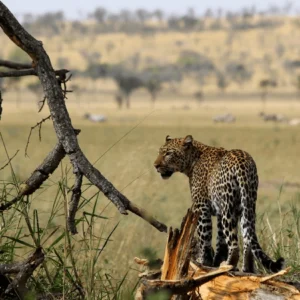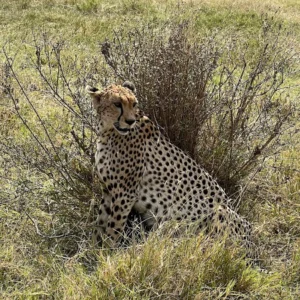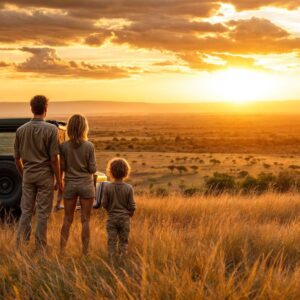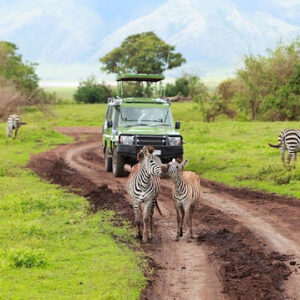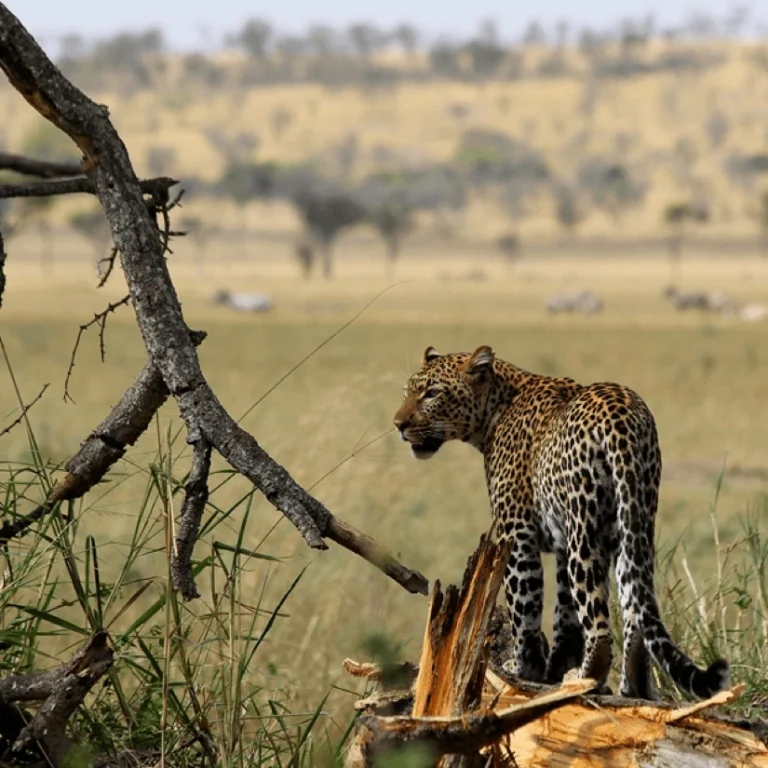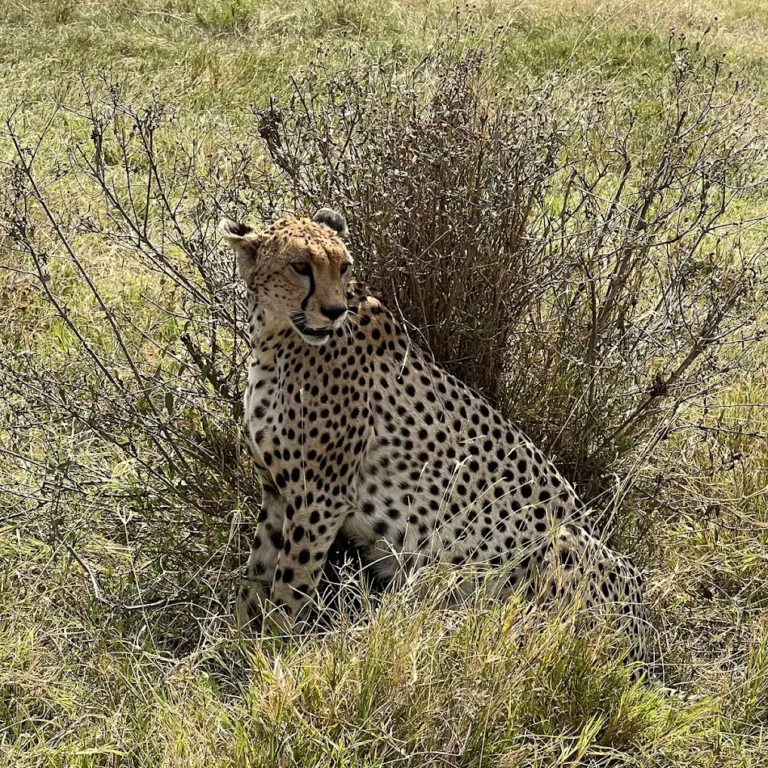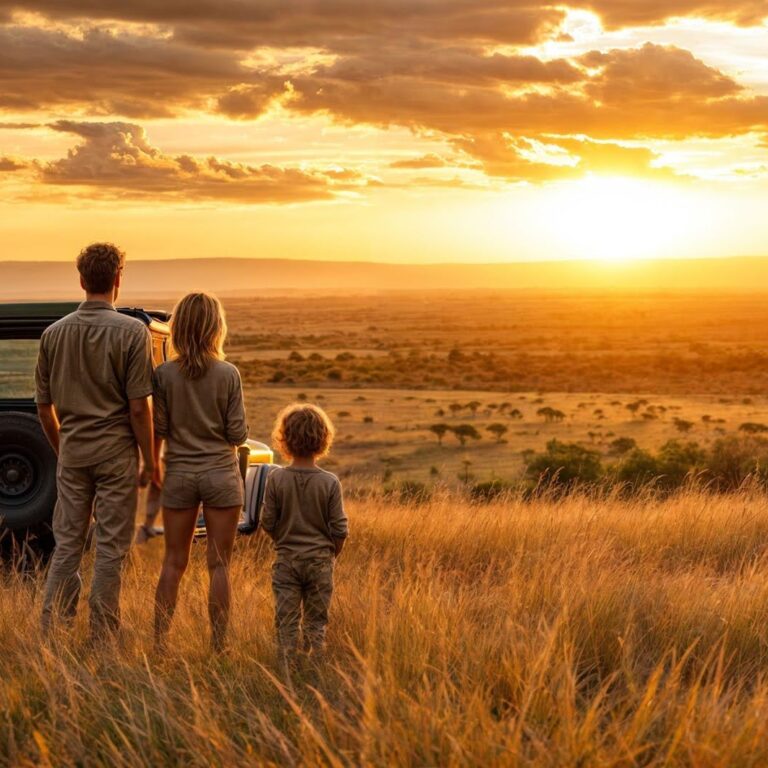Unforgettable Adventures: Things That Should Be On Your Tanzania Itinerary. Tanzania, a land of unparalleled natural beauty and cultural richness, is more than just a destination; it’s an experience that awakens the soul. From the vast, wildlife-rich plains to the majestic peaks and idyllic spice islands. This East African gem offers an array of adventures that should grace every traveler’s itinerary. Planning a trip to Tanzania means curating a journey filled with awe-inspiring moments, thrilling encounters, and deep cultural immersion.
A Tanzanian itinerary should include a safari in the Serengeti, exploring the Ngorongoro Crater, hiking Mount Kilimanjaro, and relaxing on the beaches of Zanzibar. Don’t miss experiencing the Great Migration, visiting Lake Manyara, and enjoying the unique culture of Stone Town. Consider a hot air balloon ride over the Serengeti, chimpanzee trekking in Gombe Stream National Park, and a walking safari in Ruaha National Park. While it’s impossible to fit everything into a single trip, here are the quintessential experiences that define a Tanzanian adventure, offering something for every type of explorer.
1. Witness the Great Migration: Nature’s Grandest Spectacle
For many, the ultimate reason to visit Tanzania is to witness the Great Wildebeest Migration. An epic annual odyssey of over two million wildebeest, zebras, and gazelles across the Serengeti and Maasai Mara ecosystems. This natural phenomenon, driven by the search for fresh grazing and water, is a raw, powerful, and deeply moving spectacle. Depending on the time of year, you can witness different phases: the calving season in the southern Serengeti (January-March), the dramatic river crossings (Mara River, July-October), or the vast herds spread across the central and western plains. Sharing this awe-inspiring event, with the thunder of hooves and the constant dance of predator and prey, is an unparalleled wildlife experience that will stay with you forever.
2. Climb Mount Kilimanjaro: Conquer Africa’s Rooftop
Standing at 5,895 meters (19,341 ft), Mount Kilimanjaro is not only Africa’s highest peak but also the world’s tallest free-standing mountain. It calls to adventurers seeking a profound physical and mental challenge. Climbing Kilimanjaro is a non-technical trek, meaning no specialized climbing skills are needed, but it demands serious endurance, proper acclimatization, and mental fortitude. The ascent takes you through five distinct ecological zones. From lush rainforest to barren alpine desert, and finally the arctic summit. Reaching Uhuru Peak at sunrise, with the curvature of the Earth visible and the vast African plains stretching below. An indescribable achievement and a life-changing experience. Various routes cater to different fitness levels and timeframes, with 7-9 day itineraries being ideal for acclimatization.
3. Descend into the Ngorongoro Crater: A Wildlife Haven
Often called the “Eighth Wonder of the World,” the Ngorongoro Crater is a UNESCO World Heritage site and a must-see. This immense, unbroken volcanic caldera acts as a natural enclosure, creating a self-contained ecosystem where wildlife thrives in incredible density. Descending into the crater offers immediate and guaranteed wildlife viewing opportunities, including the chance to spot the “Big Five” (lion, leopard, elephant, rhino, buffalo) within a single day. The diverse landscapes within the crater, from grasslands and swamps to forests and a soda lake, support an astonishing array of animals. Making it one of the most reliable and spectacular safari experiences on Earth.
4. Unwind on Zanzibar’s Pristine Shores: The Perfect Beach Escape
After the dusty exhilaration of safari, the idyllic archipelago of Zanzibar offers the perfect complement. A “bush to beach” paradise. Just a short flight from the northern safari circuit. Zanzibar boasts pristine white-sand beaches, crystal-clear turquoise waters, and a rich history. Relax on the picture-perfect beaches of Nungwi or Kendwa, snorkel or dive in the vibrant coral reefs. Explore the labyrinthine alleyways of Stone Town (a UNESCO World Heritage site). Embark on a spice tour. Zanzibar provides the ultimate romantic escape. Whether you’re seeking serene relaxation, thrilling water sports, or a deep dive into Swahili culture.
5. Discover the Hadzabe Tribe: A Glimpse into Ancient Ways
For an unparalleled cultural immersion, venturing out to meet the Hadzabe Tribe near Lake Eyasi offers a unique and respectful insight into one of Tanzania’s last remaining hunter-gatherer communities. This experience goes beyond typical village visits. With a knowledgeable guide, you can spend time with the Hadzabe. Learning about their traditional hunting techniques (often joining a morning hunt), foraging for berries and roots, and understanding their deep connection to the land. This respectful exchange provides a rare and authentic glimpse into a way of life that has remained unchanged for millennia, offering a powerful contrast to modern living.
6. Hike the Lush Trails of Mount Meru: Kilimanjaro’s Little Sister
Often overshadowed by its towering neighbor, Mount Meru (4,562m/14,968ft) in Arusha National Park is a formidable and rewarding climb in its own right. It offers a challenging multi-day trek through diverse landscapes, including dense forests and volcanic ash cones. Hiking Meru provides a fantastic opportunity for acclimatization if you plan to climb Kilimanjaro afterward. It can be a primary adventure for those seeking a less crowded experience. Yet equally stunning, the mountain experience. The trails offer incredible views of Kilimanjaro and the chance to spot buffalo, giraffes, and various bird species in the lower sections.
7. Learn to Cook Local Delicacies: A Taste of Tanzania
Immerse yourself in Tanzania’s vibrant culture through its cuisine. Taking a local cooking class or arranging a culinary experience in a town like Arusha or Moshi, or even in Zanzibar, is a delightful way to connect with the local way of life. You’ll learn about traditional ingredients, spices, and cooking methods, preparing dishes like ugali (cornmeal porridge), nyama choma (grilled meat), pilau (spiced rice), or various curries. This hands-on experience offers a sensory journey. Deepens your understanding of Tanzanian culture and provides delicious memories you can recreate at home.
8. Witness a Maasai Village: Cultural Connection
A visit to a traditional Maasai village offers a vibrant cultural experience. The Maasai, known for their distinctive red shukas (garments) and rich cultural heritage, are an iconic symbol of East Africa. Ethical visits, often arranged through reputable safari operators, allow you to learn about their semi-nomadic lifestyle, traditions, dances, and their deep reverence for cattle. It’s an opportunity for respectful cultural exchange. Gaining insight into their daily lives, social structures, and the challenges they face in a modernizing world.
9. Hot Air Balloon Safari: A Breathtaking Perspective
For a truly unforgettable safari experience, a hot air balloon safari over the Serengeti or other national parks offers a unique and breathtaking perspective. Rising silently with the sun, you’ll drift gracefully above the vast plains. Witnessing the wildlife (including the Great Migration if timed correctly) from an unparalleled aerial vantage point. The experience often culminates with a champagne breakfast served in the bush. Making it a luxurious and incredibly romantic addition to any itinerary. The tranquility of the flight, combined with the panoramic views, creates indelible memories.
10. Serengeti National Park: The Quintessential Safari
Even beyond the Great Migration, the Serengeti National Park remains the quintessential African safari destination. Its seemingly endless plains are home to an extraordinary concentration of wildlife. Offering year-round game viewing that consistently impresses. The park’s diverse habitats support the “Big Five” in abundance, along with cheetahs, wild dogs, various antelopes, and a myriad of bird species. Whether you’re exploring the central Seronera region. The vast southern plains, or the remote western corridor, the Serengeti guarantees classic safari action and incredible photographic opportunities.
11. Ruaha National Park: Tanzania’s Untamed Wilderness
For those seeking a wild, remote, and less crowded safari experience, Ruaha National Park in southern Tanzania is an exceptional choice. It is Tanzania’s largest national park and offers a rugged, untouched landscape with dramatic riverine areas, baobab forests, and vast plains. Ruaha is renowned for its large elephant herds. Significant lion prides (including tree-climbing lions), and a high diversity of antelope species not easily seen elsewhere. The Ruaha River is a lifeline, attracting abundant wildlife during the dry season. A safari here offers an authentic, off-the-beaten-path feel, appealing to seasoned safari-goers.
12. Arusha National Park: A Northern Gem
Often overlooked as merely a transit point, Arusha National Park is a gem located close to the city of Arusha. It offers a surprisingly diverse array of landscapes within a relatively small area. Here, you can enjoy traditional game drives with views of Mount Meru and Kilimanjaro. Spot colobus monkeys in the lush forest, and witness thousands of flamingos on the Momella Lakes. Crucially, Arusha National Park is one of the few places where you can undertake a walking safari or a canoeing safari, providing a unique experience. Immersive perspectives of the wildlife and natural environment. It’s an excellent addition for a relaxed first or last day. Book now, astonishing things that should be on your Tanzania itinerary, family, honeymoon/couple, solo/single travelers, packing list, trips, vacation, holiday, reviews, kids-friendly adventures, photos, map, cost/prices, luxury, budget, mid-range packages, all-inclusive!
- The Best Places to See Wildlife in Tanzania
- Magical Lesser-Known Safari Destinations in East Africa
- Tanzania safari destinations
- Southern Tanzania Safari
- African Safari Itineraries

